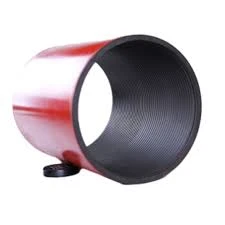- Afrikaans
- Albanian
- Amharic
- Arabic
- Armenian
- Azerbaijani
- Basque
- Belarusian
- Bengali
- Bosnian
- Bulgarian
- Catalan
- Cebuano
- Corsican
- Croatian
- Czech
- Danish
- Dutch
- English
- Esperanto
- Estonian
- Finnish
- French
- Frisian
- Galician
- Georgian
- German
- Greek
- Gujarati
- Haitian Creole
- hausa
- hawaiian
- Hebrew
- Hindi
- Miao
- Hungarian
- Icelandic
- igbo
- Indonesian
- irish
- Italian
- Japanese
- Javanese
- Kannada
- kazakh
- Khmer
- Rwandese
- Korean
- Kurdish
- Kyrgyz
- Lao
- Latin
- Latvian
- Lithuanian
- Luxembourgish
- Macedonian
- Malgashi
- Malay
- Malayalam
- Maltese
- Maori
- Marathi
- Mongolian
- Myanmar
- Nepali
- Norwegian
- Norwegian
- Occitan
- Pashto
- Persian
- Polish
- Portuguese
- Punjabi
- Romanian
- Russian
- Samoan
- Scottish Gaelic
- Serbian
- Sesotho
- Shona
- Sindhi
- Sinhala
- Slovak
- Slovenian
- Somali
- Spanish
- Sundanese
- Swahili
- Swedish
- Tagalog
- Tajik
- Tamil
- Tatar
- Telugu
- Thai
- Turkish
- Turkmen
- Ukrainian
- Urdu
- Uighur
- Uzbek
- Vietnamese
- Welsh
- Bantu
- Yiddish
- Yoruba
- Zulu
stainless steel hose couplings
The Versatility and Importance of Stainless Steel Hose Couplings
In the realm of piping systems and fluid transport, hose couplings play an essential role. Among the various materials available for hose couplings, stainless steel has emerged as a preferred choice for many industries due to its excellent properties, including durability, resistance to corrosion, and ability to withstand extreme temperatures. This article explores the significance, applications, and advantages of stainless steel hose couplings.
Stainless steel hose couplings are designed to connect hoses and ensure a leak-free transfer of liquids or gases. These couplings come in various sizes and configurations, allowing for compatibility with different hose types. The implementation of stainless steel in their construction offers remarkable resilience against the harsh conditions often found in industrial environments.
One of the standout advantages of stainless steel hose couplings is their corrosion resistance. Unlike other materials, such as aluminum or brass, which can degrade over time when exposed to moisture and chemicals, stainless steel retains its integrity. This characteristic is particularly vital in industries such as food processing, chemical manufacturing, and pharmaceuticals, where hygiene and contamination control are paramount. The non-reactive nature of stainless steel ensures that the quality of the transported materials remains uncompromised.
Furthermore, stainless steel hose couplings are favored for their ability to handle high pressure and temperature extremes. In applications such as oil and gas exploration, where equipment is frequently subjected to physical stresses and fluctuating temperatures, the robustness of stainless steel proves invaluable. These couplings maintain their strength and functionality, ensuring safe and efficient operations.
stainless steel hose couplings

The versatility of stainless steel hose couplings extends to their design options
. With various coupling styles available—such as cam and groove, threaded, and flanged connections—users can select the most suitable type based on their specific requirements. This flexibility is crucial for industries that rely on custom setups or configurations to optimize their processes.In addition to their functional benefits, stainless steel hose couplings also contribute to the overall aesthetic appeal of a piping system. The shiny, polished surface of stainless steel provides a modern look that can enhance the appearance of an installation. This visual advantage can be particularly significant in environments where the equipment is on public display or in client-facing areas.
Maintenance is a critical aspect of any industrial operation, and stainless steel hose couplings offer ease of maintenance through their simple cleaning processes. Unlike couplings made from other materials that might harbor bacteria or contaminants in microscopic crevices, stainless steel can be easily sanitized. This feature is especially appealing in sectors like the food and beverage industry, where maintaining sanitary conditions is a legal requirement.
Sustainability is another factor contributing to the popularity of stainless steel hose couplings. Stainless steel is a recyclable material, and its longevity translates to reduced waste and lower replacement costs. By choosing stainless steel couplings, businesses can minimize their environmental impact while also benefiting from durable, cost-effective solutions.
In conclusion, stainless steel hose couplings represent a critical component in fluid transportation systems across various industries. Their corrosion resistance, ability to endure high pressures and temperatures, versatility in design, and ease of maintenance make them indispensable tools in ensuring efficient and safe operations. As industries continue to evolve, the demand for reliable, high-quality connectors like stainless steel hose couplings will only increase, solidifying their place as a cornerstone of modern engineering and industrial practices. Investing in stainless steel hose couplings not only ensures operational efficiency but also reflects a commitment to quality and sustainability in today’s ever-changing industrial landscape.
-
Tubing Pup Joints: Essential Components for Oil and Gas OperationsNewsJul.10,2025
-
Pup Joints: Essential Components for Reliable Drilling OperationsNewsJul.10,2025
-
Pipe Couplings: Connecting Your World EfficientlyNewsJul.10,2025
-
Mastering Oilfield Operations with Quality Tubing and CasingNewsJul.10,2025
-
High-Quality Casing Couplings for Every NeedNewsJul.10,2025
-
Boost Your Drilling Efficiency with Premium Crossover Tools & Seating NipplesNewsJul.10,2025







